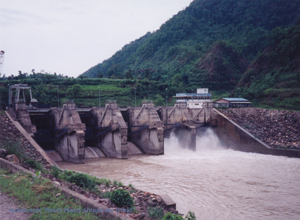India is the second most populous nation in the world and has extreme ecological diversity. 70% of the population in India, close to 700 million, still live in the rural areas. Meeting their energy requirements in a sustainable manner continues to be a major challenge for the country.
Almost 75% of the total rural energy consumption is in domestic sector. For meeting their cooking energy requirements, villagers depend predominantly on biomass fuels like wood, animal dung and agricultural residues, often burnt in inefficient traditional cookstoves. The main fuels used for lighting in the rural households are kerosene and electricity. Irrigation is mainly through electrical and diesel pumpsets, while the rural industries and the transport sectors rely primarily on animal power and to some extent on commercial sources of energy like diesel and electricity.
Of the total energy consumption in the country, almost 60% is met by conventional energy sources and rest by non-conventional and renewable energy sources. This energy use pattern has serious implications both on the environment as a whole as well as on the users. Fuelwood requirements have contributed to the degradation of forests.This has led to villagers, especially women and children traveling longer distances and spending more time in collecting fuelwood, switching to inferior, fuels, and even altering food habits to reduce fuel consumption affecting the nutrition levels. Given the exploitation processes of natural resources, this situation is likely to worsen in the years to come. Rural energy systems are further strained by the inability of people to shift to commercial fuels like electricity, LPG and kerosene because of low purchasing powers and limited availability. The large subsidies on electricity for agriculture and kerosene have also been a cause of concern for energy planners.
To redress these problems, several efforts have been made both by governmental organizations and non-governmental organizations in the form of national programmes for rural electrification, and promoting renewable energy technologies like biogas, improved cookstoves and solar cookers. However, in spite of the existence of these programmes for nearly two decades, their impact on the rural energy scenario has been limited. Over the last few years, in line with economic liberalization, there have been efforts towards bringing about commercialization implemented in the past two decades in order to formulate a meaningful rural energy policy at the national level.



